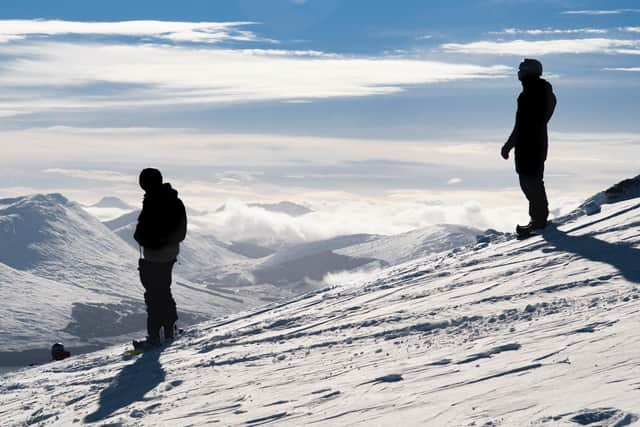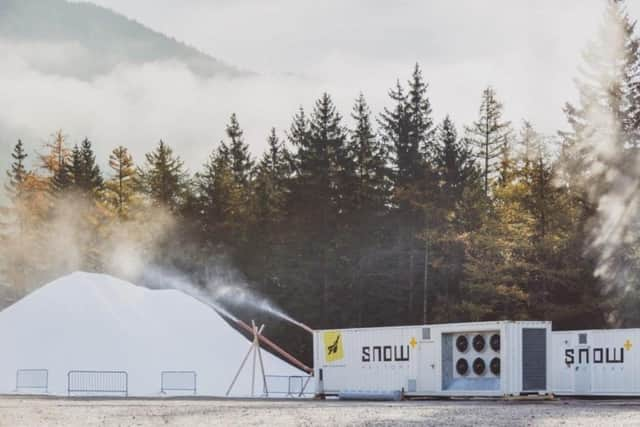What the 2022-23 Scottish ski season taught us about snowmaking
If there’s one thing you can be sure about when it comes to a Scottish ski season, it’s that it’s impossible to be sure about anything. After several recent winters got off to frustratingly slow starts, only to come good in the end, it was starting to feel as if “dry January” might be becoming a regular fixture. The 2022-23 season, however, turned all that on its head.
As reported in this slot earlier in the year, January 2023 served up a lengthy period of dreamy conditions: good snow cover, sunny skies and – best of all – not too much in the way of the howling, knock-you-off-your-feet winds that tend to come barrelling in from the Atlantic at that time of year. Even before the month was out, Glencoe’s head honcho Andy Meldrum was reporting that his resort was on the verge of clocking up 10,000 skier days. Given that there have been a few winters in the recent past when Glencoe achieved less than 10,000 skier days in total between December and May, achieving that number in the first month of the year was cause for celebration.
Advertisement
Hide AdAdvertisement
Hide AdIndeed, by the end of January, things seemed to be shaping up for a bumper snow year – some people could even be heard whispering about vintage winters like 2009-10, which saw a total of 374,789 skier days recorded across Scotland’s five resorts. But then February happened, and then March, and then April. Or, rather, they didn’t really happen at all. There was the odd flurry of snow, followed by the odd flurry of excitement, but nothing even approaching the length and quality of the January bonanza.


The final tally of skier days for the 2022-23 season across Cairngorm, Glencoe, Glenshee, The Lecht and Nevis Range has just been released, and – given how promising things were looking earlier in the year – it makes for disappointing reading: 98,989. In the grand scheme of things that’s by no means a disaster – it’s practically double the tallies for the two worst seasons on record, the 2016-17 season, which saw just 54,000 skier days, and the 2018-19 season, which saw 54,481. Still, it’s the sense of missed opportunity that rankles: if it hadn’t been for that late January/early February thaw, the snow that fell after that critical period might have landed on hard-packed pistes rather than on bare rocks and grass, in which case things might have turned out very differently.
Glencoe’s own figures provide a stark illustration of the way in which skier numbers fell off a cliff after January. They may have been closing in on 10,000 skier days by the end of the month, but by season’s end they had only reached 12,169. The ski lifts were turned off on 18 February and stayed off due to lack of snow. By contrast, however, Glencoe received 18,020 visits from people buying access chair tickets to use their sledging slope, which is created each year using artificially manufactured snow from a state-of-the-art SnowFactory. Although only 75m long, the sledging slope was still open in April. “Another decent investment in snowmaking,” muses Meldrum, “and we might have a viable industry whatever the weather does.”
Clearly, in commercial terms, Meldrum would rather be welcoming skiers to Glencoe than sledgers, as he can charge more money for skiing. Still, customers are customers, and if the success of the sledging slope at Glencoe illustrates anything, it’s surely that SnowFactories work, enabling pistes to be built up and maintained through periods of thaw.
The trouble is, SnowFactories aren’t cheap: the one at Glencoe cost £430,000. Then again, cheap is relative. The recent repairs to the funicular railway at Cairngorm cost in the region of £25 million – equivalent to 58 SnowFactories, or 11-and-a-half each for the five ski centres. How many kilometres of piste would it be possible to make and maintain with that kind of snowmaking capacity?


It might seem unfair to single out Cairngorm in this way, but – as it’s effectively Scotland’s only state-owned and operated ski resort, since Highlands and Islands Enterprise took it over from the previous (and, I think it’s fair to say, sub-optimal) operators Natural Retreats – this is where much of the of public money spent on skiing in Scotland seems to go these days.
In addition to the funicular repairs, in the last couple of years HIE have renovated the Ptarmigan Restaurant at the top of the resort, at a cost of £780,000, and improved the Coire Cas car park, at a cost of £710,000. Of course, for a ski centre to do well, it should ideally have nice places for people to park and nice places for them to eat. The most fundamental requirement, however, is snow. Skiing in Scotland may be marginal, but with carefully-targeted investment in snowmaking equipment, it could be less so. Isn’t man-made snow an eco-catastrophe? Not necessarily. The SnowFactory at the Lecht runs off power from the resort’s own wind turbine. Won’t climate change wreck skiing in Scotland in the end anyway? Perhaps, but not for a while yet. And in the meantime, wouldn’t it be better to give Scottish skiers some snow to ski on at home, rather than giving them an incentive to travel overseas?
